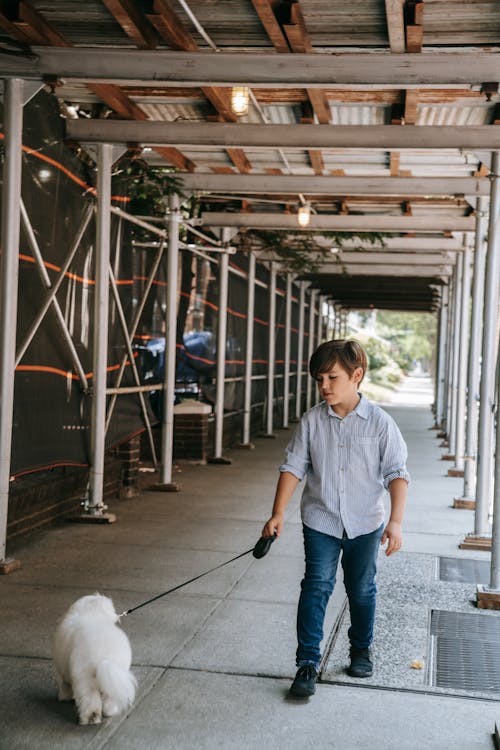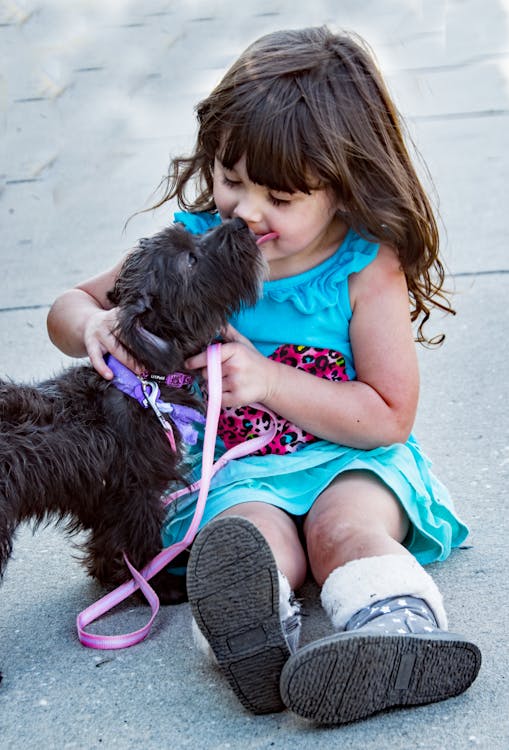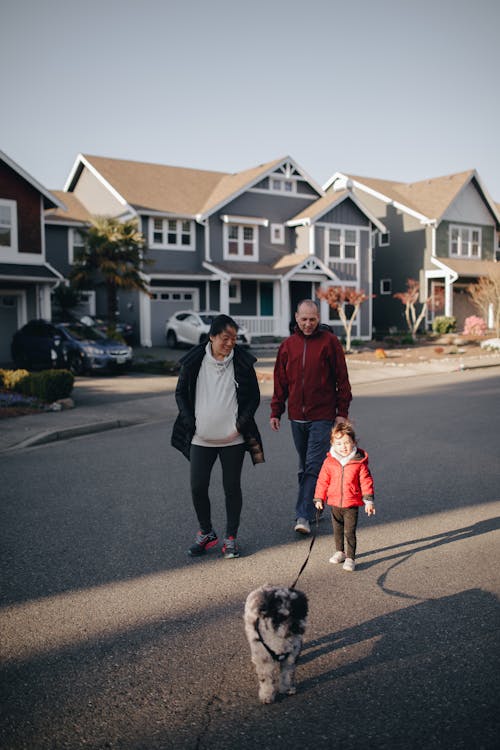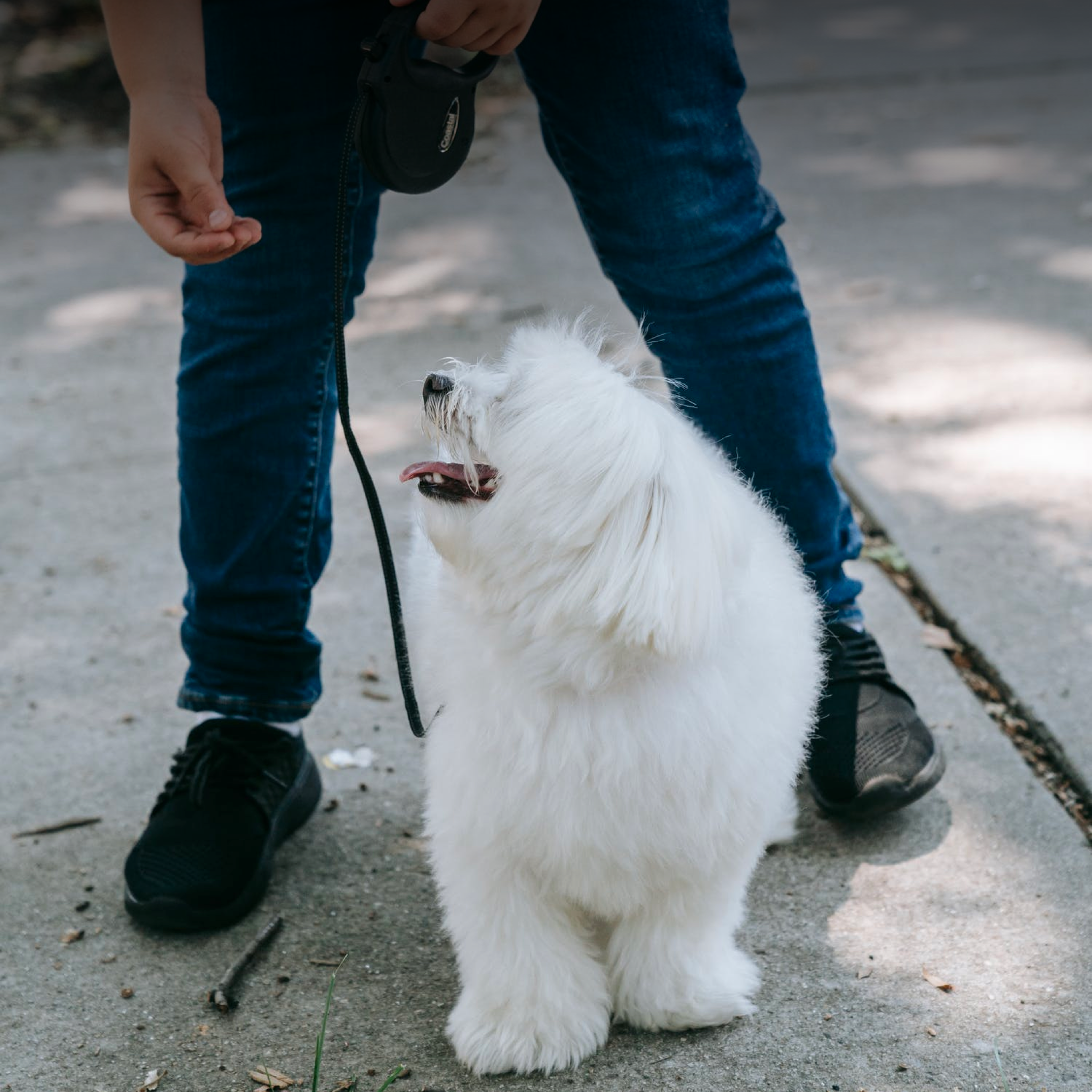When trying to simultaneously raise good humans and well-behaved pups, you’ll find that teaching opportunities abound, and that there are numerous lessons both your dogs and your kids will appreciate.
No matter how old the kids are, you want to make sure your canine obeys them, trusts them, and sees them as a miniature pack leader. While certainly a formidable task, with some perseverance and effort, it’s quite achievable (and can be a lot of fun).
Teaching the kids how to walk the dog on their own is one of these all-important dog-care-come-life lessons you’ll enjoy imparting. Plus, it will mean you have a bit more time for yourself, or that you can simply enjoy the family walk without managing the leash.
When Can You Start Teaching the Kids to Walk the Dog?

Children as young as 5 can (and should) be taught to walk the family dog - although not on their own. They should understand the principle and help out. While it may be a bit comical at times if you own a large dog, they still need to understand that the child is a leader of the pack, and that even their small voices need to be obeyed.
10-year-olds can walk the dog on their own, provided that both parties know what they are doing.
Even if you are just starting to teach a puppy to walk on a leash, you can still involve your kids in the process. In fact, this can be the best possible scenario, as they will both be learning at the same time.
Make sure your kids are truly ready for the dog-related responsibilities before you try to get them involved. Putting too much pressure on them won’t be of much help.
Before the Walk
Before you actually set out on your walk, make sure you set the right tone. The dog shouldn’t be too excited, and the kids should be in a good mood as well. If either of them is too worked up or fussy, it might be best to handle the walk yourself, and leave teaching for another time.
Get your child to tell the dog to sit. When they do, the child should give them a treat. This will reinforce the connection in the dog’s mind that treats can come from obeying this person, and they will soon start obeying orders with or without treats.
The child should also be the one to clip the leash onto the dog. Make sure you choose an appropriate leash, one that is both very comfortable yet secure for the dog, and that your child can also comfortably handle. It shouldn't be too heavy, and should sit comfortably in the hand.
Reward the dog for sitting patiently while your child takes their time to get them walk-ready. If they start to resist, reinforce the “sit” command, and reward them again.
It’s important to let the child be the one who attaches the lead, and that they are the ones doling out the treats. If you need to, you can verbally reinforce a command, but don’t take over.
Walk On
If you feel you need to, you can use two leads when you first start walking the dog with your child, especially if the dog is particularly strong, if they are just a puppy, or if your child is still very young. This will ensure the dog doesn’t run off after a squirrel, or get spooked by an unexpected sound or movement.

Make sure you stop the dog whenever they start to pull on the leash, and start over. Use the same command at all times, something like “walk on” will do very well.
Teach your child to always use their voice to control the dog, and not to try and use force. After all, the dog may be significantly stronger, and if they aren’t in command, they’ll not be able to stop them rushing after a cat, for instance.
Keep rewarding the dog for their good behavior, and stop them whenever they start to misbehave. Instruct your child to use a calm and authoritative voice, and not to scream or shout at the dog.
The more you reinforce this habit, the deeper the relationship between your dog and child will become. Most importantly, the dog will start to view your child as an authority, and will obey all sorts of commands, after they have mastered walking with them.
Bear in mind that it might sometimes be easier to teach a large, gentle dog to walk with a child, than a small, temperamental pup. However, all it takes is some patience, so don’t give up at the first hurdle.
Rewards for Your Child
Remember that children have shorter attention spans, so they might begin to get bored after just a couple of minutes of walking the dog. Make sure to keep your initial walking sessions shorter, but to also give your child some time with the leash when you go out on family walks.
Children may also get frustrated if a dog isn’t as obedient as they would like them to be, so keep reinforcing the point that time is what is needed here, and they will have to be patient.
When you return from a successful walk, always praise your child and make sure they understand when they have done a good job. Encourage them to spend time with the pup (supervised, if needed), and speak to them often about the relationship and the commands they are using and how.
While you don’t need to give your child treats every time the dog obeys them, you should think of a way to reward them in the long run. After all, you are not merely training a canine, you are teaching your child some very important and useful habits, and the reward will help them stick.
General Dog Walking Rules

Once you are certain your children have mastered the basics of dog walking, make sure to also teach them the following rules and behaviors:
- Never tug on a dog’s lead too hard, but don’t keep it too loose or long either. Always have enough room to quickly direct the dog back to heel.
- When out on a walk, always be mindful of the dog’s safety, especially when crossing the road. Keep them close just to be certain.
- Don’t let strangers pet the dog. They may be perfectly friendly, but rather stay vigilant.
- Don’t let the dog off the leash, especially when there are other, unfamiliar dogs around.
- Teach them what to do in case of an emergency: when to call you, ask help from a passerby or another dog walker.
Only let your child walk the dog in areas they know well, and where you are certain about the safety of them and the dog.
Final Thoughts
Teaching your kids to walk the dog will take a bit of time. All the effort will be worth it though, as you watch them become the best of friends.




Share:
Building Engagement with your Dog
5 Tricks to Make Halloween a Treat